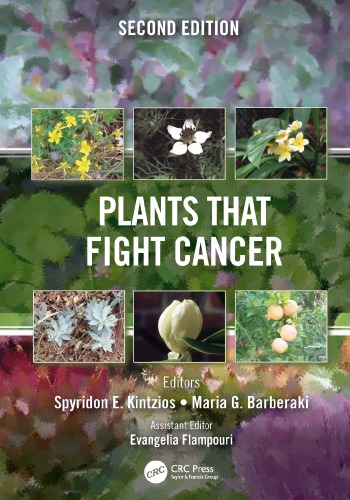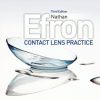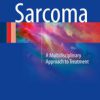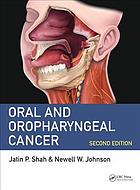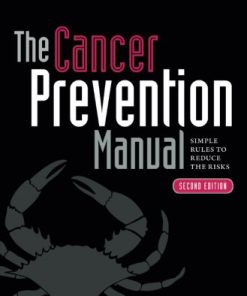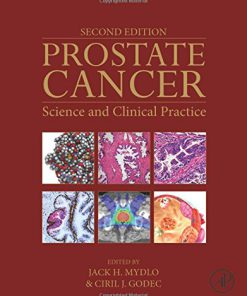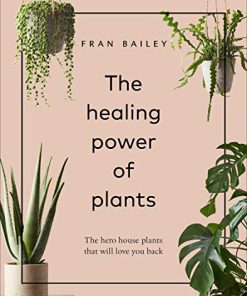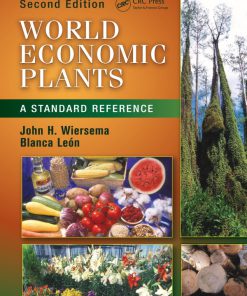Plants that Fight Cancer 2nd Edition by Spyridon Kintzios, Maria Barberaki 0429614965 9780429614965
$50.00 Original price was: $50.00.$25.00Current price is: $25.00.
Plants that Fight Cancer 2nd Edition by Spyridon E. Kintzios, Maria G. Barberaki – Ebook PDF Instant Download/DeliveryISBN: 0429614965, 9780429614965
Full download Plants that Fight Cancer 2nd Edition after payment.
Product details:
ISBN-10 : 0429614965
ISBN-13 : 9780429614965
Author: Spyridon E. Kintzios , Maria G. Barberaki
Plants that Fight Cancer, Second Edition, is a compilation that reviews cancer treatment and research-based information on the plant kingdom as the source of both known and novel chemical moieties and mixtures, many of them still under identification. This new edition follows the organization of the first book with a considerable expansion of content that more than doubles the volume of information.
Divided into four segments, the first part is dedicated to a review of our current knowledge of cancer, the different types and incidence, the molecular pathways of the disease, and the various treatment protocols, with an emphasis on chemotherapy. The second part is a brief journey in pharmacognosy, with detailed information about each of the fourteen different chemical groups of plant secondary metabolites, their use in cancer chemotherapy, and updated information on the biotechnological production of the most representative compounds in clinical practice. The third part of the book comprises six chapters dedicated to either plant chemotherapeutical approaches to specific cancer types (e.g. bladder, prostate) or specific groups of plant secondary metabolites with novel and promising properties for cancer treatment (e.g. naphthoquinones, lectins, phenanthridone alkaloids). The fourth part, containing investigative information on almost 300 individual plant species with established anticancer properties, either on a clinical or in vitro level, is with no doubt the most analytical.
Plants that Fight Cancer 2nd Table of contents:
1. Cancer: A Brief Overview of the Disease and its Treatment
1.1. Incidence and causes: cancer in a nutshell
1.2. Classification of cancer types
1.2.1. Cancers with less than 20% five-year survival rate
1.2.2. Cancers with five-year survival rates (at all stages) between 20 and 50%
1.2.3. Cancers with five-year survival rates between 50 and 80%
1.2.4. Cancers with five-year survival rates higher than 80%
1.3. Therapy
1.3.1. Conventional cancer treatments
1.3.2. Advanced cancer treatments
1.3.2.1. Protein kinase inhibitors and other enzymes
1.3.2.2. Immunotherapy
1.3.2.3. Angiogenesis inhibitors
1.3.2.4. Hormones
1.3.3. Other advanced therapies
1.3.4. Alternative cancer treatments
1.4. From source to patient: testing the efficiency of a candidate anticancer drug
1.4.1. Preclinical tests
1.4.2. Phases of Clinical Trials
1.4.3. Clinical Trial Protocols
2. The Plant Kingdom: Nature’s Pharmacy for Cancer Treatment
2. 1. Brief overview of the general organization of the plant cell
2.2. The chemical constituents of the plant cell
2.2.1. Primary metabolites
2.2.2. Secondary metabolites
2.3. Why do plant compounds have an anticancer activity?
2.4. Chemical groups of natural products with anticancer
2.5. Biotechnology and the supply issue
3. Cytotoxic Phenanthridone Alkaloid Constituents of the Amaryllidaceae
3.1. Introduction
3.2. Isolation of phenanthridones
3.3. Structural features of phenanthridones
3.4. Synthesis of phenanthridone alkaloids
3.5. Cytotoxic effects of phenanthridone alkaloids in vitro
3.5.1. Narciclasine and its congeners
3.5.2. Pancratistatin and its congeners
3.5.3. Narciprimine and its congeners
3.6. Structure-activity relationship studies
3.6.1. Truncated analogs
3.6.2. Ring-A modifications
3.6.3. Ring-B modifications
3.6.4. Ring-C modifications
3.7. Cytotoxic effects of phenanthridone alkaloids in vivo
3.7.1. In vivo effects of narciclasine
3.7.2. In vivo effects of pancratistatin
3.8. Mechanism of action of phenanthridone alkaloids
3.8.1. Permeability and solubility
3.8.2. Efflux pump interactions
3.8.3. Mitotic effects
3.8.4. Effects on protein synthesis
3.8.5. Topoisomerase inhibition
3.8.6. Effects on calprotectin
3.8.7. Effects on nitric oxide
3.8.8. Effects on tumor necrosis factor (TNF)
3.8.9. Apoptosis inducing effects
3.8.9.1. Apoptosis inducing effects of narciclasine
3.8.9.2. Apoptosis inducing effects of pancratistatin
3.8.9.3. Apoptosis inducing effects of ring-C unsaturated analogs
3.8.10. Tumor invasion and metastasis
3.9. Conclusions
3.10. Acknowledgements
3.11. Conflict of interest
3.12. Abbreviations
4. Naphthoquinone-Contained Anticancer Terrestrial Plants
5. Polyphenols and cancer immunology
5.1. Introduction
5.1.1. Tumor microenvironment
5.2. Tumor-infiltrating cells
5.2.1. Macrophages
5.2.2. Dendritic cells (DCs)
5.2.3. NK cells
5.2.4. Myeloid Derived Suppressor Cells (MDSCs)
5.2.5. T and B lymphocytes
5.2.5.1. T lymphocytes
5.2.5.1.1. CD8+ Cytotoxic T-Lymphocytes (CTLs)
5.2.5.1.2. CD4+ helper T-lymphocytes
5.2.5.1.3. CD4+ CD25+ FoxP3+ T lymphocytes (Tregs)
5.2.5.1.4. T-lymphocytes
5.2.5.2. B-lymphocytes
5.2.6. Cancer Associated Fibroblasts (CAFs)
5.3. Natural compounds in cancer therapy
5.3.1. Polyphenols
5.3.1.1. Resveratrol
5.3.1.2. Curcumin
5.3.1.3. Quercetin
5.3.1.4. Green tea polyphenols (GTPs) – (-)-Epigallocatechin 3- gallate (EGCG)
5.3.1.5. Apigenin
5.3.1.6. Silibinin
5.3.1.7. Other polyphenols
5.4. Conclusions
6. Medicinal plant-product based fabrication nanoparticles (Au and Ag) and their anticancer effects
6.1. Introduction
6.2. Medicinal plants and Au/or Ag-NPs synthesis
6.3. Mechanisms of action
6.4. Conclusion
7. Bladder and Prostate Cancer
7.1. Introduction
7.2. Method
7.3. Results
7.3.1. Selenium and Vitamin E
7.3.2. Pomegranate
7.3.3. Green Tea
7.3.4. Curcumin
7.3.5. Resveratrol
7.3.6. Silibinin
7.3.7. Ginkgo Bilboa
7.3.8.Modified Citrus Pectin
7. 3.9. Phellodendron amurense
7.3.10. Red Clover
7.3.11. Salvia
7.3.12. Mistletoe
7.3.13. Combined Therapies
7.4. Conclusion
8. Plant Lectins in Cancer ¿reatment, the case of Viscum album L.
8.1. Introduction to lectin research
8.2. Lectin abundance and classification
8.3. Plant Lectins in cancer diagnosis and treatment
8.3.1 Plant lectins in cancer diagnosis
8.3.2 Plant lectins in cancer treatment
8.4. Viscum album lectins in cancer treatment
8.5. Conclusion
9. Plants Species with Anticancer Activity
9.1. Introduction: General Botanical Issues
9.1.1. Life cycle
9.1.2. Plant anatomy
9.2. Species-specific information
9.2.1. Success Stories: Plant species used in contemporary clinical cancer treatment
9.2.2. Species with Anticancer Active Ingredients
People also search for Plants that Fight Cancer 2nd :
do plants get cancer from the sun
do plants get cancer
do plants fight
do plants cause cancer
implants for cancer patients
Tags: Plants, Fight Cancer, Spyridon Kintzios, Maria Barberaki
You may also like…
Medicine - Surgery
Oral and oropharyngeal cancer Second Edition Newell J. Johnson
Cookbooks
Relationships & Lifestyle - Exercise & Fitness
Relationships & Lifestyle - Health - Diseases & Disorders
Prostate Cancer, Second Edition: Science and Clinical Practice Jack H. Mydlo Md Facs
Housekeeping & Leisure - Gardening
The Healing Power of Plants The Hero House Plants that Love You Back Fran Bailey
Engineering
Models for Design: Electrical Calculations for Industrial Plants 1st Edition Robert E. Henry Pe
Science (General)
World Economic Plants a Standard Reference Second Edition León


